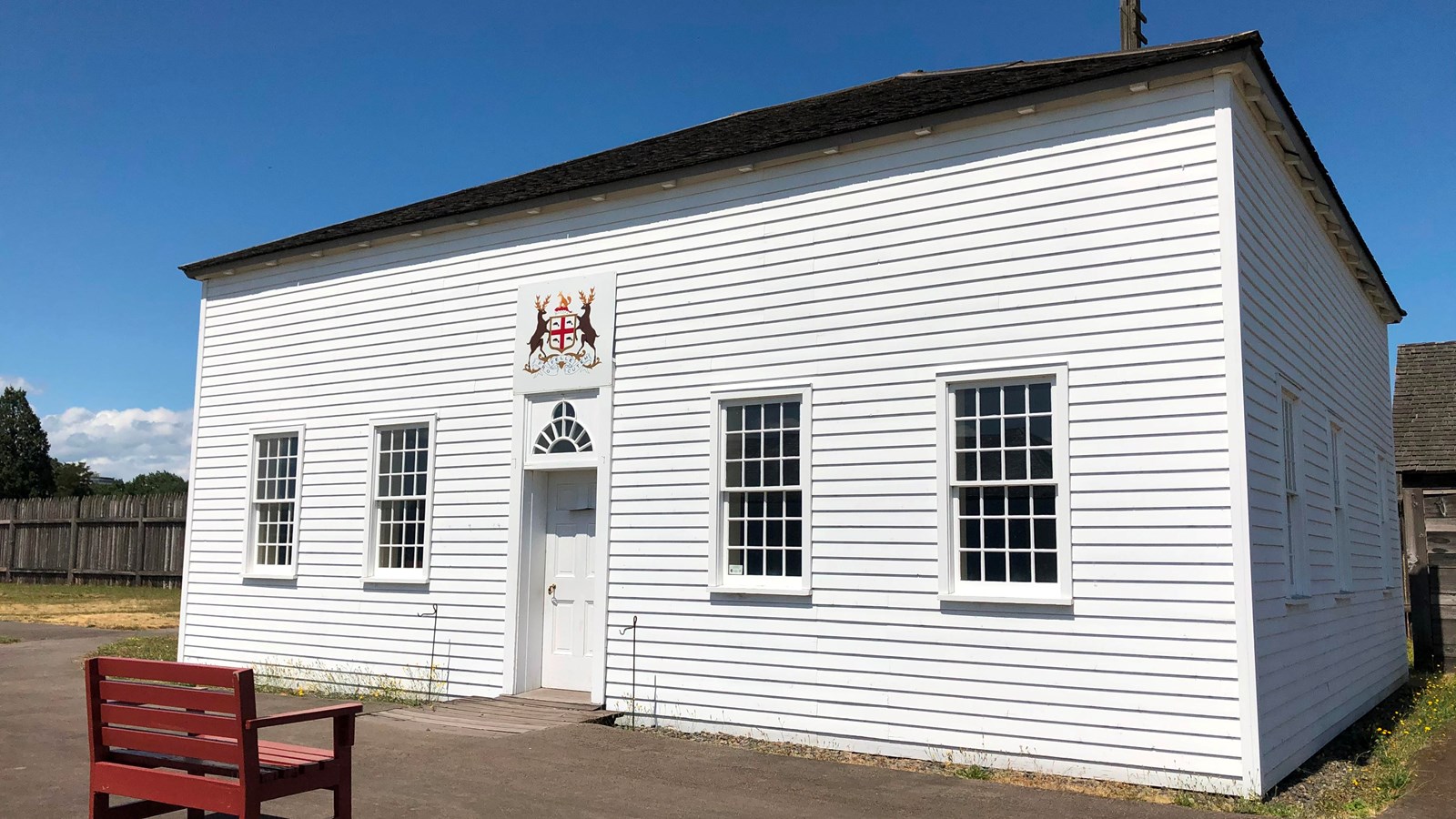Last updated: September 8, 2020
Place
The Counting House

NPS Photo
Quick Facts
Amenities
1 listed
Historical/Interpretive Information/Exhibits
The Counting House at Fort Vancouver was the administrative center for all Hudson's Bay Company (HBC) operations in the Columbia Department. Known to most simply as "the office," this was where official records of the Pacific Northwest fur trade were made and kept. A small but important building, the Counting House represented the HBC's business interests at Fort Vancouver. Here, clerks kept track of all the goods and monies that traded hands throughout the region, watching over a dizzying array of inventories, bills, exchanges, payments, journals, and correspondences. For every record, three copies were made - one for the Fort's keeping, one for officials at York Factory on Canada's Hudson's Bay, and one for officials in London. Each year, these records were bundled and sent via the York Factory Express to the main HBC office in Canada. The accounting done by Fort Vancouver's clerks helped upper management keep tabs on business from thousands of miles away.
Being a clerk was a desirable position but incredibly hard work. Clerks often sat at their desks late into the evening, squinting at handwritten ledgers by candlelight, scribbling out long notes stating who did what and what went where. The men who filled these roles sometimes complained about being worked to the bone. Clerks almost always came from London and were highly educated. Still, they had to spend years as apprentices before achieving full employment. Clerks needed to prove they possessed proper math and handwriting abilities before they got the job. Though it was in the HBC's best interests to make sure that clerks were reliable and competent, a lack of personnel at Fort Vancouver sometimes meant that less-than-adequate individuals rose through the ranks. However, if clerks were willing to put up with the years of training and endless mind-numbing work, they were often rewarded with much better pay than most HBC employees received in the Oregon Country. Apprentices made between £20 and £50 per year, and full clerks could receive salaries as high as £150, which in those days was quite a lot. Also, clerks were some of the only HBC employees at Fort Vancouver that were promoted to commissioned management positions, though promotions were usually a long time coming, if they came at all.
The reconstructed Counting House you see today is based on the "new office," built in 1845 to replace the aging "old office" from the 1820s. It is built on the archaeological footprint of the new office building. The new office was painted white to show just how important it was; paint was hard to come by on the frontier, and its use marked the building as prestigious, much like the Chief Factor's residence. Above the front door hung the HBC's coat of arms, which prominently displayed the Company's motto: Pro pelle cutum, Latin for "A skin for a skin." In an abstract way, the Counting House was where furs collected by trappers became wealth for all HBC employees - a literal skin for a figurative skin.
Being a clerk was a desirable position but incredibly hard work. Clerks often sat at their desks late into the evening, squinting at handwritten ledgers by candlelight, scribbling out long notes stating who did what and what went where. The men who filled these roles sometimes complained about being worked to the bone. Clerks almost always came from London and were highly educated. Still, they had to spend years as apprentices before achieving full employment. Clerks needed to prove they possessed proper math and handwriting abilities before they got the job. Though it was in the HBC's best interests to make sure that clerks were reliable and competent, a lack of personnel at Fort Vancouver sometimes meant that less-than-adequate individuals rose through the ranks. However, if clerks were willing to put up with the years of training and endless mind-numbing work, they were often rewarded with much better pay than most HBC employees received in the Oregon Country. Apprentices made between £20 and £50 per year, and full clerks could receive salaries as high as £150, which in those days was quite a lot. Also, clerks were some of the only HBC employees at Fort Vancouver that were promoted to commissioned management positions, though promotions were usually a long time coming, if they came at all.
The reconstructed Counting House you see today is based on the "new office," built in 1845 to replace the aging "old office" from the 1820s. It is built on the archaeological footprint of the new office building. The new office was painted white to show just how important it was; paint was hard to come by on the frontier, and its use marked the building as prestigious, much like the Chief Factor's residence. Above the front door hung the HBC's coat of arms, which prominently displayed the Company's motto: Pro pelle cutum, Latin for "A skin for a skin." In an abstract way, the Counting House was where furs collected by trappers became wealth for all HBC employees - a literal skin for a figurative skin.
